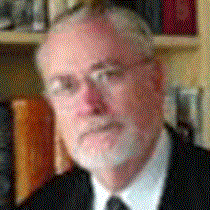Phnom Penh
Phnom Penh, the capital of Cambodia, is in deep mourning for its King Father, Norodom Sihanouk. As we approached the city, we saw huge posters and flags all along the riverbank. The old city is still its traditional self, marred somewhat by a lot of new construction in the south end, but still with remarkable charm.
We boarded a convoy of “cyclos” to travel the length of the riverside Sisowath Quay to the Royal Palace, circling by Wat Phnom and many of the classic French colonial buildings that characterize this part of the city. The Throne Room is closed as it is the repository for the remains of the old king, which will be taken on February 4 to the cremation pyre on its newly-chosen site: the lawn of the National Museum. This Khmer-style structure, we were told, will be permanent, kept for the cremations of future generations of royals and other notables. We visited the elegant Silver Pagoda and its garden, admiring the flowering bodhi or “cannonball” trees near the entranceway.
We ended our morning with a visit to the National Museum, built during the French colonial period, but in traditional Khmer style, and were guided through examples of Khmer statuary and other treasures. In this fine building, all are genuine, some found by adventurous archeologists, some rescued from looters who were looking to sell them on world markets.
After lunch at the excellent Malis (Jasmine) Restaurant, we boarded our buses for the mandatory excursion to the S-21 (“Tuol Sleng”) interrogation centre in the south end of the city. Our knowledgeable guides took us through the exhibits and photos that document the 17,000 prisoners who were processed there for eventual execution at the Killing Field at Cheung Ek. One of our guides has vivid memories of the period as a child: members of his own community, and very nearly close family members, ended their days here. This is a mere vestige of the more than two million Cambodians who perished during that awful period.
A small group proceeded to Choeung Ek to view the skull stupa and other evidence of the horrors that took place there. A very different tour took most everyone else to visit the NGO Tabitha and its redoubtable Director, Janne Ritskes. Janne spoke of her 20 years in Cambodia and her efforts to encourage self-help for families throughout Cambodia, through a myriad of projects, supported both from Cambodia and abroad. This involves wells, house-building and, principally, a simple but innovative savings program. In addition to contributing to Tabitha’s administrative costs by purchasing fine silks and other products at the Tabitha shop, the guests were introduced and contributed to Janne’s latest major undertaking: a unique Women’s Hospital being built in Phnom Penh, and to be staffed partly from abroad.
Professor Jean-Michel Fillippi of the Royal University of Phnom Penh concluded the day with a splendid overview of historical developments between Cambodia’s independence in 1953 and the new constitution of 1993, from the overthrow of Prince Sihanouk to the rise of the Khmer Rouge to the Vietnamese occupation to, finally, democratic elections under UN auspices.
In the evening, after a splendid barbeque buffet on the terrace deck of Jahan, we were treated to a gorgeous performance by young classical Khmer dancers, accompanied by a marvelous singer and musicians, all from one of Cambodia’s finest dance training establishments.




